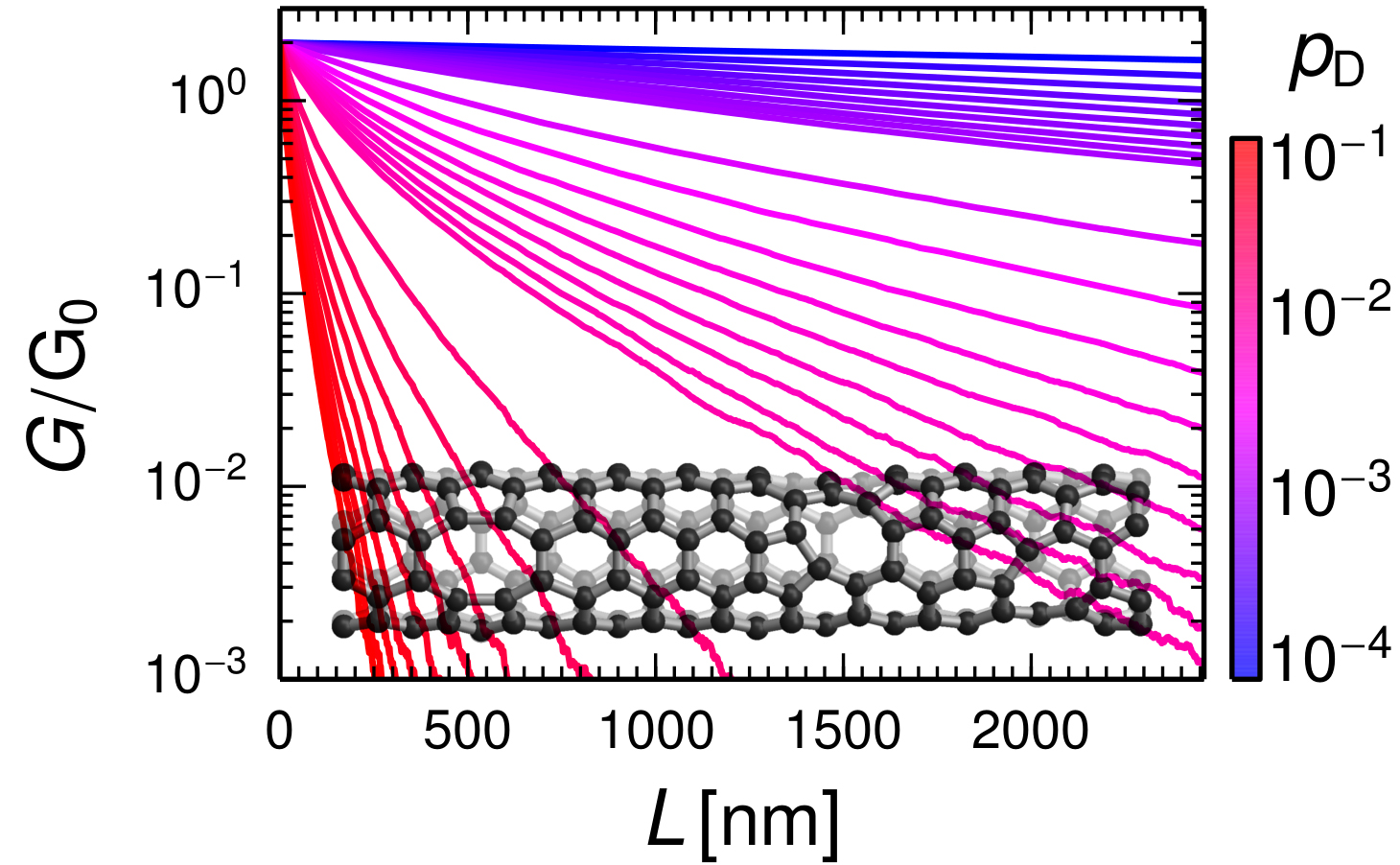

Based on an efficient quantum transport code, the current and the conductance of very large CNT devices in the μm range can be calculated. The use of recursive Green’s function techniques yields linear scaling algorithms and allows to access the length-dependence with only a small extra effort. The underlying density-functional-based tight-binding model gives the accuracy of density functional theory while maintaining the simplicity and the fastness of the tight-binding approach. This transport code was used to determine the conductance of carbon nanotubes (CNTs) with structural defects and its dependence on the defect type and the defect probability as well as on structural parameters like CNT length and CNT diameter. The results of this comprehensive and computationally extremely expensive study were statistically analyzed and brought into a simple analytical model which describes the CNT conductance for an arbitrary number of arbitrarily mixed defects and arbitrary CNT diameters. Based thereon, conductance estimations can easily be performed, just by relating the conductance of a μm-long CNT with a huge amount of defects to material parameters of the single defects. This only requires a few transport calculations, whose computational costs are vanishingly small in comparison to the exact determination.
 Fraunhofer Institute for Electronic Nano Systems
Fraunhofer Institute for Electronic Nano Systems